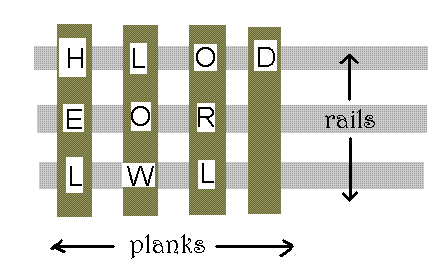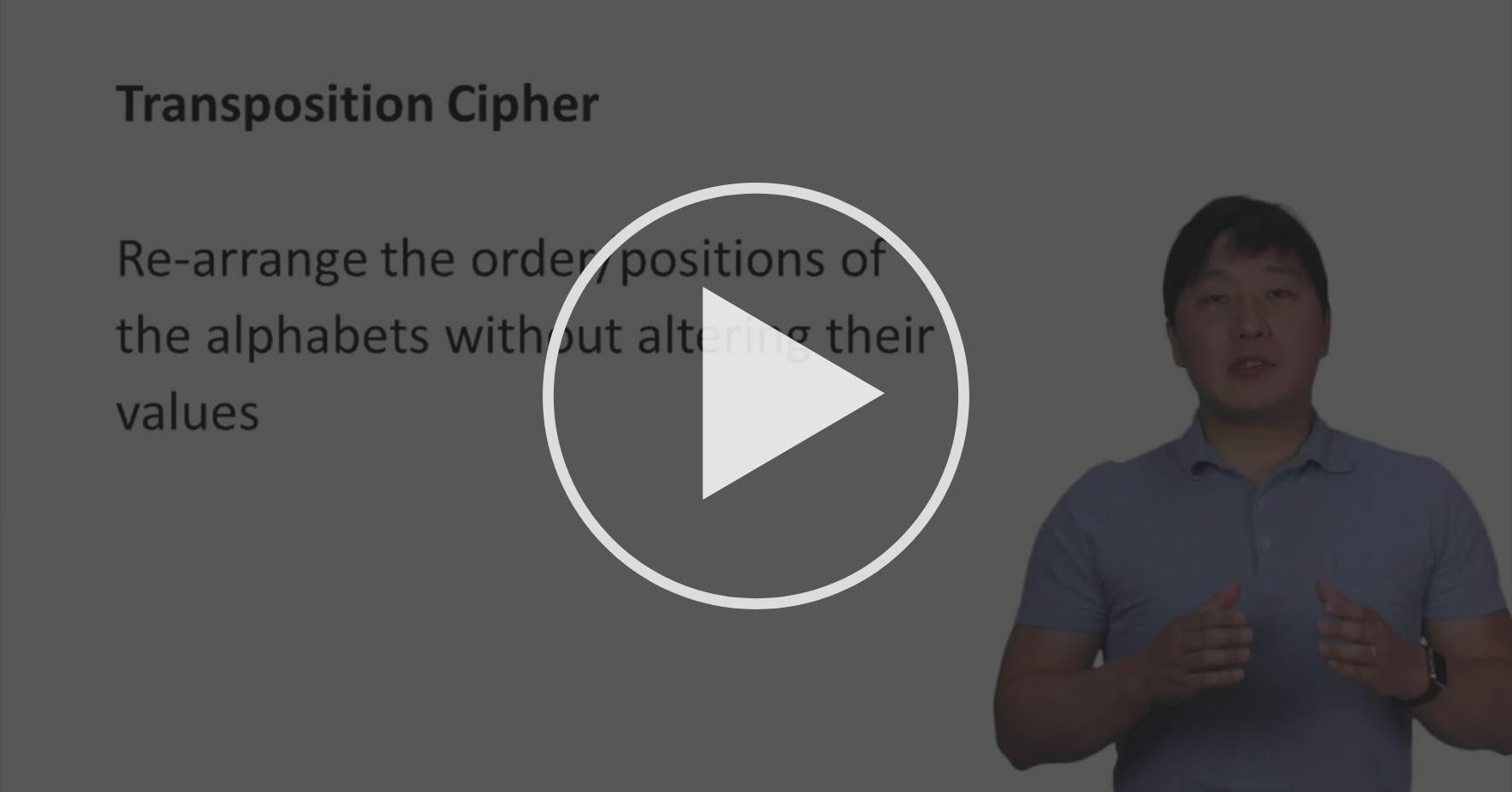

A dot is made for each letter of the message in the proper column, reading from top to bottom of the sheet. It is "written by ruling a sheet of paper in vertical columns, with a letter at the head of each column. However, it may also refer to a different type of cipher described by Fletcher Pratt in Secret and Urgent. The term zigzag cipher may refer to the rail fence cipher as described above. As a result, the rail-fence cipher is considered weak. Therefore the number of usable keys is low, allowing the brute-force attack of trying all possible keys. Let N, the length of the ciphertext, are not usable, since then the ciphertext is the same as the plaintext. (Note that spaces and punctuation are omitted.) Then read off the text horizontally to get the ciphertext: RUN AT ONCE.' with 3 "rails", write the text as: The ciphertext is then read off in rows.įor example, to encrypt the message 'WE ARE DISCOVERED. This simplistic method of cryptanalysis (checking every single possible key) only works on very simple ciphers such as this cipher, even slightly more complex ciphers can have far too many keys to check all of them.In the rail fence cipher, the plaintext is written downwards diagonally on successive "rails" of an imaginary fence, then moving up when the bottom rail is reached, down again when the top rail is reached, and so on until the whole plaintext is written out.

So the method used is to take the ciphertext, try decrypting it with each key, then see which decryption looks the best. In transposition cipher the alphabets of the plain text are rearranged in a different & usually quite complex order. Of course, the more ciphertext you have, the more likely this is to be true (this is the case for all statistical measures, including the frequency approaches above). The key that results in a decryption with the highest likelyhood of being english text is most probably the correct key. For automated methods of determining how 'english like' a piece of text is, check out the Classical Cryptanalysis section, in particular Quadgrams as a fitness measure. In other words it should look just like this: English Letter Frequenciesįor a method that works well on computers, we need a way of figuring out which of the keys results in the most english like plaintext after decryption. Anagramming is another very powerful method that can be used with any transposition cipher, that consists of taking chunks of ciphertext and guessing what the plaintext would be.Ī peculiarity of transposition ciphers is that the frequency distribution of the characters will be identical to that of natural text (since no substitutions have been performed, it is just the order that has been mixed up). It is very easy to find a key if you know some of the plaintext, or can guess some of it. A cryptanalyst (code breaker) simply has to try several keys until the correct one is found. The railfence cipher is a very easy cipher to break. This is a JavaScript implementation of the Railfence Cipher.Ĭryptanalysis is the art of breaking codes and ciphers. The ciphertext is again read off along the rows: dttfsedhswotatfneaalhcleelee JavaScript Example § The ciphertext is read off along the rows: dnetlhseedheswloteateftaafcl We write it out in a special way on a number of rails (the key here is 3)ĭ. The key for the railfence cipher is just the number of rails. This is equivalent to using an un-keyed columnar transposition cipher. Many websites claim that the rail-fence cipher is a simpler "write down the columns, read along the rows" cipher. The railfence cipher offers essentially no communication security, and it will be shown that it can be easily broken even by hand.Īlthough weak on its own, it can be combined with other ciphers, such as a substitutionĬipher, the combination of which is more difficult to break than either cipher on it's own.


if (railrowcol ''): result.append(railrowcol) col + 1. result row, col 0, 0 for i in range(len(cipher)): if row 0: dirdown True if row key-1: dirdown False. It is a transposition cipher that follows a simple rule for mixing up the characters in the plaintext to form the ciphertext. for j in range(len(cipher)): if ((railij ‘’) and (index < len(cipher))): railij cipherindex index + 1.
#Rail fence cipher program code crack#
The railfence cipher is a very simple, easy to crack cipher.


 0 kommentar(er)
0 kommentar(er)
